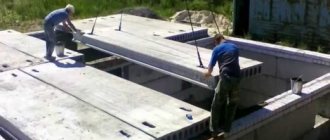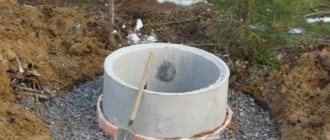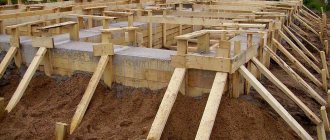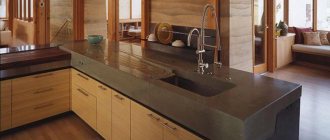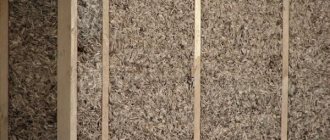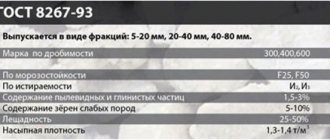The basement part of any structure is negatively affected by precipitation and mechanical damage, which significantly affects the duration of the operational period of the entire foundation. To preserve the original appearance and give the base strength, its surface is protected with materials intended for finishing work. One of these options is to plaster the base under the stone with your own hands.
Having chosen stone-like plaster as the exterior finishing of the plinth, you should adhere to certain requirements for this type of coating:
- resistance to mechanical damage;
- ability to withstand the effects of a humid environment and temperature changes;
- resistance to mold and mildew, the development of dangerous microorganisms, and ultraviolet light.
Taking all this into account, you should buy dry compositions for finishing facade walls that have properties designed for numerous weather cycles in a particular region.
There is another way - to prepare the finishing solution yourself, selecting the optimal ratio of additives, chemical and plasticizing components.
Decorative stone-like plaster, prepared at home, is applied to the main plaster coating of the base. It includes:
- cement material M 400 or M 500 in the proportional ratio “1 to 3” or “1 to 4”;
- quarry sand that does not contain clay and organic inclusions;
- water, the volume of which is selected taking into account the required density of the solution, which will be convenient to work with;
- plasticizers, polymers and hydrophobic additives. Their role can be played by ordinary washing powder or PVA adhesive;
- tinting additives and mineral fillers.
The applied plaster must dry on its own - no forced measures are used.
The plaster solution with which the base is finished must dry for two to three weeks and be periodically moistened with water. After this, you are allowed to proceed to finishing the base with stone-like plaster, applying a decorative solution in a layer of 0.5 to 3 cm, depending on the depth of the relief pattern.
Conditions to be observed
If a finish with a stone pattern is chosen as the outer covering of the plinth, the general requirements for such a coating must be observed:
- Mechanical strength (important when installing it yourself);
- Moisture resistance;
- Frost resistance;
- Biological resistance (fungus, mold, microorganisms);
- Neutral to ultraviolet radiation.
Based on this, dry ready-made facade mixtures with the specified properties are purchased, designed for a large number of weather cycles in a given climatic zone. There is another option - prepare the solution for finishing the base yourself, choosing additives, plasticizers and chemical additives.
If there is a layer of thermal insulation for the foundation of a house made of polymer materials, the reliability of its external protection should not raise doubts. Seepage will lead to loss of specified properties and premature failure.
How to save money when finishing a basement with plaster.
Involvement of construction crews.
Ordering work from specialists is the most convenient option. But professionals will charge a higher price for the work, which will significantly increase the overall cost of finishing the basement. At the same time, plasterers take into account not only the fee per square meter. m. walls, but also the number of slopes, features of the workplace and plastering of right angles.
Requirements for the solution
Preparing the mortar
A decorative (finishing) layer of mortar, prepared by hand and consisting of:
- cement (preferably M400 grade in a proportion of 1/3. M500 - ¼);
- sand (quarry sand, sifted on a fine mesh, washed to remove clay and organic inclusions);
- water (the amount varies until a thick, plastic mass is obtained, convenient for application, leveling, and shaping);
- additives (plasticizer, hydrophobic component, polymer dispersion. The simplest options could be PVA glue, a small amount of washing powder (increases plasticity);
- color, mineral filler in the form of stone chips with decorative properties (marble, quartz, granite).
The hardening of the plaster cannot be accelerated by force (blowing, heating, IR emitters). The main layer of foundation plaster dries under the covering film material for 2-3 weeks (depending on the thickness) with regular wetting for the first 4 days. Only after complete drying does the covering of the base begin. The thickness will depend on the depth of cutting of the relief and ranges from 0.5-1 cm (for shallow impressions) to 2-3 cm (plausible, volumetric masonry).
Preparing the surface of an old wall
The wall surface can have different structure and physical characteristics. It can be brick, stone, wood, etc.
There are no fundamental differences in the preparation of such surfaces before applying the cement mixture.
If the surface is loose, it is advisable to impregnate it with an acrylic or latex primer.
This will bind the dust and strengthen the top layer of the wall.
In addition, when applying the plaster, the water necessary to hydrate the solution will not leave it. Only in this case can you get a durable cement stone.
To better retain the first base cement layer, we will attach a metal mesh to the wall surface.
We will consider the most complex option. This is an old stone wall with cavities and dips on the surface.
A similar operation (only with a different mesh) was performed when making a concrete pool rock and a decorative rollable boulder from an old iron barrel.
In our case, those places where there are large gaps and irregularities will be reinforced with metal reinforcement.
We will tie the mesh to it with wire.
The mesh has a large cell size - about 20 mm. Therefore, it is advisable to install two grids. The first - before installing the fittings. The second one is on top of it.
Stone jointing
Joining the plinth to look like stone
The advantage of plaster is that any design can be reproduced on a non-dried mortar. The most typical types:
- Masonry. Imitates brick, cut stone of different sizes;
- Blocks. Masonry option with larger pieces, palace blocks;
- Torn boot. Large/medium/small-sized boulders of different sizes, fitted end-to-end;
- Small stone. Many rows of unprocessed small elements;
- Pebble. Round small pebbles.
Avoid noticeable distortions, unnatural transition angles, frequent repetitions, and precise adjustment of the depicted elements. Also, do not level out small roughnesses and chips. The transitions of hillocks into depressions look more natural than a strict plane, which is not required when plastering the lower belt of the house.
What is a base and why is it protected?
The basement part of the building is the lower, foot part of the walls, lying on the foundation . Often the basement part protrudes beyond the walls of the building. It happens that the base is located level with the wall line.
The basement of any building is the most vulnerable part in relation to dirt, mechanical stress, and moisture . A kind of transitional part from the foundation to the wall should prevent cold and water from entering the façade of the building, so it must be carefully protected and insulated.
A waterproofing barrier is used to protect against moisture. If there is a need to insulate the basement, install insulation. To prevent the influence of external factors, including mechanical stress, the basement of the building is protected with cladding materials.
Plinth panels provide reliable protection for the plinth. In addition, they are able to improve the basement part in terms of decorative design: the building will look neat and stylish.
Creation methods
The process of plastering according to the chosen texture with your own hands can be done in two ways:
- Stamping. Stencils of several contours are made, which are applied to freshly applied plaster and tapped. The resulting print is embroidered. Rollers are also used for shallow relief. The decorative pattern is rolled in even rows.
- Cutting. Recesses in the solution are made with a sharp tool (a fragment of a sheet of metal or tin, cut to resemble a characteristic groove). The lines are expanded by inserting a metal ruler, tapping until the required clearance and angle are obtained. Complex transitions in the cladding can be formed from a notch made with a spatula using a rubber-gloved hand. The hardened solution is amenable to the action of a circular saw, but the shape is already limited. A wide seam requires two cuts with the middle removed.
The plausibility of large details of the image on the finishing of the foundation of the house is achieved using a combined method. A characteristic pattern of the material is applied to the block formed by cutting using a metal impact stamp with protruding parts measuring 15x15 cm.
The surface is leveled by wet grouting the plaster, for example, with a tarpaulin mitt. The roughness of natural stone is created with soft metal brushes.
Performing priming
All surfaces that need to be protected from plaster, such as window frames, must be covered with masking tape.
A durable and high-quality plaster coating can be obtained only with the correct use of a deeply penetrating primer in two layers. If the base part is to be painted, then only a façade primer with maximum drooping properties is used for processing. Only the use of high-quality materials and compliance with technological requirements for the preliminary preparation of the base for applying plaster can significantly increase the service life and improve the appearance.
Primer
Silicone quartz primer ST 15 Ceresit
If you plan to further perform decorative finishing work, then it is advisable to give preference to a façade adhesive or acrylic-based primer.
| Type of primer composition | Features and Specifications |
| Alkyd type, deep penetration | The composition is suitable for treating brick or concrete plinths previously covered with lime-based plaster mortars. |
| Deep penetration with water-repellent effect | Best suited for brick plinths on precast foundations and provides additional waterproofing. |
| Primer for painting | The composition promotes uniform distribution of the coloring composition and can be represented by either an acrylic or a water base. |
Primer for decorative plasters
Primer of the base
Prices for facade primer
Facade primer
Treatment
In order for the base to be beautiful and reliable for many years, it is not enough to simply plaster it. In addition to introducing various additives into the solution, after the base has dried, etching and waterproofing are carried out. Disinfection of the outer layer is achieved by treatment with an acid suspension. They work with a paint roller, sprayer, with the obligatory use of skin and respiratory protection.
We recommend watching a video on how to properly treat a basement floor with a specialized protective solution.
After drying, the solution is washed off with water, the effluent of which must be drained away from the house into prepared depressions in the ground.
Step-by-step installation instructions
Depending on what material is on the surface of the plinth, there will be several features when laying artificial stone.
For example, if the base is made of aerated concrete, then it must be pre-primed . Then the aerated concrete is plastered with one layer of cement-sand mortar. The layer thickness is 2 cm.
If the base is plastered, then its surface must be leveled with sandpaper or a special tool. If the base is made of sand-lime brick, it also needs to be plastered with a mortar of cement and limestone.
To install homemade stone from concrete and cement, a water repellent and glue are used. Laying is done from top to bottom, with the pattern first laid out on the floor. When using the jointing technique, the finished result will look more attractive.
Painting
The most successful color scheme for finishing is to choose a base color that does not contrast with the main tone of the house. It’s even better if the shade of the resulting stone looks a little darker, “heavier” than the wall material. However, the choice of color depends only on your desire, and the base can be painted or plastered:
- in one tone (the plaster is not painted or a continuous coating is done with one composition);
- two tones (the stone differs from the seam cut);
- several tones (color transitions imitate real material. This is the most expensive, effective and labor-intensive execution of finishing the foundation).
Characteristics and properties of cement/concrete
There is probably no person who has not faced the need to use cement.
This is a truly universal material that is used everywhere. Not only is it convenient and easy to use, but it is also non-toxic, hypoallergenic and boasts a long service life. Even dentists initially used cement fillings. Cement is a powder made from clinker stone, which in nature and in industrial production is formed when clay and limestone are heated to 1.5 thousand degrees. The clinker granules are then mixed with other additives, such as gypsum, and ground to a powder. When interacting with water, cement forms stone. It is this quality that attracts builders and other lovers of working with stones.
The image shows cement
The most important criterion when choosing cement is its labeling. It is indicated by the letter “M” next to the number, which indicates the maximum weight that the finished product can withstand. Thus, M300 shows that with 300 kg of compression weight exerted on one cubic centimeter of this concrete, it can crack. If this indicator is 500, then you will have to apply 500 kg of pressure to destroy the stone.
Also next to the letter “M” is the letter “D”, which shows the percentage of additives in a given batch of cement. It is also possible to find abbreviations for properties that additives impart to cement, such as hydrophobicity, waterproofness, salt water resistance, white cement, or rapid-hardening.
The solution obtained from cement powder and water is called concrete. Therefore, in principle, buying concrete or cement means the same thing. When choosing cement, it is very important to look at the date of its production. Because despite all the advantages of this material, one of the main disadvantages is its short service life. Usually it is only 2 months from the date of manufacture. Thus, universal cement with a strength of M500 after 2 months will become as strong as M300, and after a while it will completely lose it. Therefore, try to purchase cement immediately before construction work and be sure to study the shelf life. What to do if you purchased good cement, but it’s a little stale? You can restore its strength by adding plasticizers to the mixture.
Choosing glue
The mortar for laying natural stone plays an important role in the design of the plinth. When choosing a composition, there are several points to consider:
The adhesive composition should be purchased only from manufacturers who have already proven themselves to be good. This way we will protect ourselves from unpleasant surprises related to the quality of the composition. The glue must be produced specifically for work aimed at laying natural stone.
Such compositions contain fillers and additives, thanks to which the adhesive acquires the properties of impeccable adhesive rigidity. Also, when choosing an adhesive composition, the porosity of the stone should be taken into account. There are three types of material structure: porous stones, slightly porous and medium porous. There must be a mark on the glue packaging indicating the direction of the composition for a particular type of stone.



